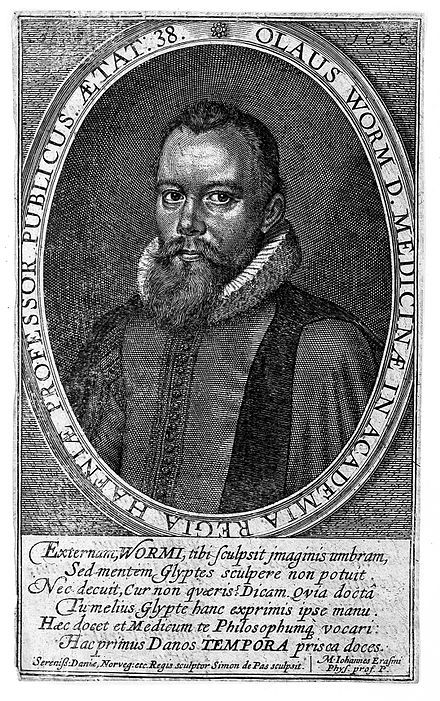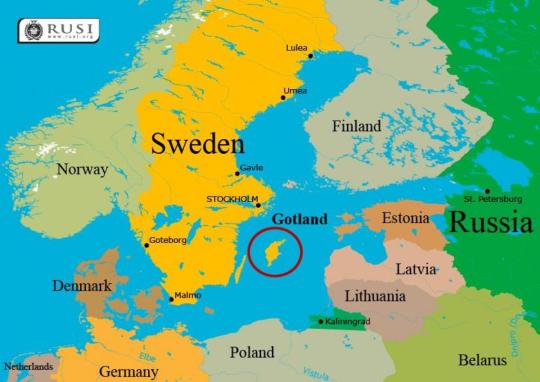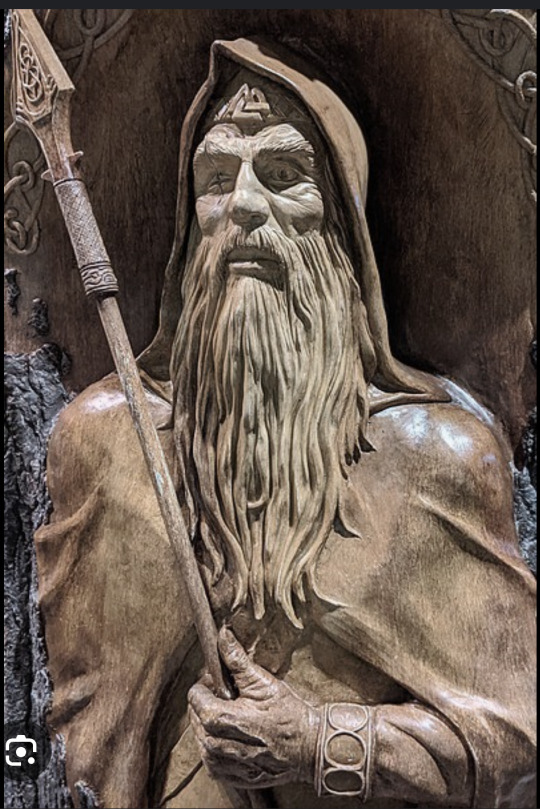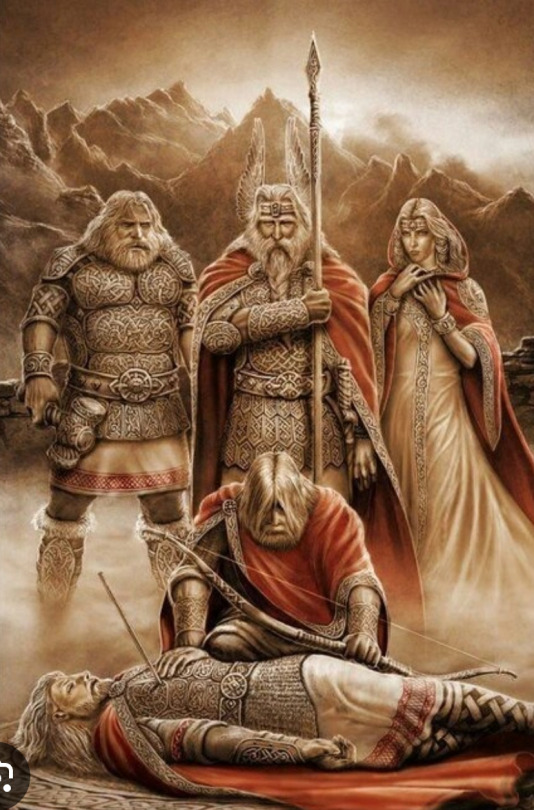#RAGNAR HAIRY BREECHES
Explore tagged Tumblr posts
Note
To be fair to Guri nail-face, lord of Skerd, people can survive some wild damage to the head. I remember reading about Phineas Gage, who survived having an iron rod driven straight through his skull that destroyed most of his frontal lobe. He survived for about 12 years after with a completely different personality. Maybe Guri's a reference to something like that?
I thought about Phineas Gage too, but in his case he didn't have the rod actually lodged in his skull and instead it just went straight through when his accident happened.
Guri's condition is depicted as just having a big 'ol spike sitting in his eye socket with 80% of it outside his skull. It would be extremely easy to remove and it remaining there would doubtlessly complicate a million different things about his life and health.
It just bothers me because I can't think of a single lore or world building reason to have him keep the spike in his head besides it "looking cool".
My best guess is Guri was just Michael's very literal imagining of a "Viking-esque" title such as "Ivar the boneless" "Ragnar Hairy Breeches" etc. In this case Nail-face is all too literal.
Thank you for your ask!
11 notes
·
View notes
Text
youtube
The Legend of Ragnar Lothbrok: The Man Who Defeated a Lindworm
The legendary feat of Ragnar Lothbrok, where he defeated a deadly lindworm to save Thora Borgarhjört, will leave you breathless!
Lothbrok, the young Viking who faced and defeated a fearsome lindworm. He did this to free the beautiful Thora Borgarhjört. In this video, we'll explore how Ragnar, with his cunning and bravery, became a legend in Norse sagas. From his nickname "Hairy Breeches," which refers to the animal skin trousers he wore during his battle with the lindworm, to the heroic deed that earned him the love of a princess, get ready for an epic adventure! Don't miss this extraordinary story of heroism and love. Subscribe now to join us on more legendary adventures!
#RagnarLothbrok#NorseMythology#Lindworm#VikingStories#NorseLegends#NorseMyth#youtube#mythology#videos#fantasy#folklore#atrumvox#Youtube
2 notes
·
View notes
Text






Pics: Ragnar Lodbrok's¹ Death Song.
1. This pic is based upon the Vikings² TV show's star Travis Fimmel.
The show is highly recommended.
2. Ragnar as he was thought to look by an early artist.
The sad part is that - without a time machine - we'll never really know how most historical folk actually looked.
We're lucky when we have any sure description³ of ancient people...
3. The type of britches Ragnar wore - while slaying a dragon(!!) - actually led to his warrior's nickname of "Hairy Breeches!"⁴
4. Examples of Medieval breeches,⁵ which originally also described one's underwear as well.
The Romans noted that Celtic folk 1st wore loose braccae⁵ made of wool.
5 & 6. Two versions of Ragnar's death: Pic #5 is a woodcut from the original Norse.
Pic #6 is an early illustration of the same event - the killer of the Serpent (dragon), dying from viper's venom.
1914: Output.
Intro: "Regner Lodbrog's Epicedium"⁶ is Lovecraft's translation of a Latin version of the runic original.
Howard introduced this poem as "A funeral song from the 700s AD."
HPL used Olaus Wormius's⁷ work that describes the violent 'career' & death of the semi-mythological Danish king Ragnar Lodbrog.
It wouldn't be published until 1944 - 7 years after Lovecraft's death.
Work: (Due to its length, I'll be using a summary of this poem.)
The story starts as befits a Viking's life - with how Ragnar earned his warrior's nickname.
"We fought with swords in hand!"
"I was new to Gothland,⁸ from the killing of the Serpent. I became Hairy Breeches from that slaughter."
"For this they call me a man."
Now, the work focuses on an early victory.
"Though I was young, in the Bay of Oreon,⁹ we spilled torrents of blood - the Earth was dyed red. The Ocean an open wound."
Then, there's a large jump in time & a listing of won battles.
"After 20 years, our 'fame' was spread everywhere."
"8 barons we bested at Diminum,¹⁰ the ravening eagle¹¹ we glutted."
"Armies fell before us in the Vistula."¹²
"Unto the Hall of Odin¹³ we sent the brave Helsingians."¹⁴
The next battle is detailed a bit.
"My sword point bit in fury - ringing notes upon mail, splitting bucklers¹⁵ in two!"
One warrior gets special attention.
"None fled, til Herauclus¹⁶ fell. None braver clove the open seas. None after him brought such a cheerful heart to combat."
Then, we're on to other battles.
"My sword bit into the Scarfian¹⁷ rocks, my shield was gory with slaughter - til King Ragno¹⁸ was slain."
"The ravens around the Indirian Isles¹⁹ had an ample feast. It's hard to single out a brave death among so many."
"At sunrise, I heard the roar of swords on the plains of Lano.²⁰ Bright were the spears & arrows as they flew."
Then, Howard closes his translation with the lamentations of young girls.
"Long did virgins mourn that loud slaughter."
(This is as far as HPL went.
The original poem, however, continues on with "the mourning of hawks," the "certainty of Death" & how the cowardly are useless - to themselves.
This longer part also mentions how "lovers always lead their forces into battle," that "destinies are fated to occur" & speak of "Father Balder!"²¹
Then, we get personal again.
"A cruel death awaits me - at vipers's fangs! For a Serpent dwells in my heart."
Now, he accurately prophesies what will happen after his death.
"My sons will stain their swords with Ella's blood."²²
Finally, Ragnar sums up his life & his acceptance of death.
"51 times, I raised my standard in battle. Now, I'm invited away - to drink ale with the Goddess of Death."²³
"The hours of my life are done. I smile as I die...")
Notes to follow in Part 2.
2 notes
·
View notes
Text
my favorite epithets in egil's saga (medieval icelandic saga):
Grim Hairy-cheeks
Thorvald the Overbearing
Ragnar Shaggy-breeches
Finn the Squinter
Eyvind the Plagiarist
4 notes
·
View notes
Text
do you think they had car vikings? did car ragnar hairy-breeches have a different name. did he still got thrown down a pit of car snakes? did his sons avenge him by performing the blood eagle on car king Ælla and if so what did the car-blood eagle look like? cars don't have lungs
"how does judaism exist in this fantasy world" dont overthink it. let me do the overthinking
14K notes
·
View notes
Text
You know how in GoT and other "medieval" setting shows/movies, they always show clothes made of fur or fur cloaks, but the fur is always on the outside? It's supposed to be on the inside creating an insulating layer in your clothes and was generally a lining for a wool garment, cause wool that is processed as they did back then retains a lot of the natural oils that make it water resistant (oils or not it's also naturally fire resistant which is so cool!)
I just keep thinking about how actual medieval people would rag on them so hard and see them as unkempt. Like, the most famous case I can think of is Ragnar Lodbrok. Like, Lodbrok isn't his surname, it's a nickname that means "hairy breeches" because he had a pair of trousers with the fur on the outside and it was so notable that no one let it go to the point that it's still a thing he's known by more than a thousand years later.
#Sword speaks#I only know it's fire resistant cause of the civil war class I took#the teacher invited other historians with collections of historical weapons and uniforms and such#and being fire retardant was a HUGE issue for soldiers in that period#so as part of the demonstration she had a handful of wool that was made the same way they processed it back then#and in the classroom she just straight up tried to lite it on fire#it didn't catch#it just turned to ash and she explained how this saved so many lives in an age where many firearms were still flintlock
97 notes
·
View notes
Text
Ragnar Hairy-Breeches and his sons Björn Ironside, Ivar the Boneless, and Sigurd Snake-in-the-Eye
14 notes
·
View notes
Link
2 notes
·
View notes
Text
0 notes
Text
Ragnar Lothbrok: A Real Viking Hero Whose Life Became Lost to Legend
Ragnar Lothbrok: A Real Viking Hero Whose Life Became Lost to Legend
https://www.ancient-origins.net/history-famous-people/ragnar-lothbrok-ferocious-viking-hero-became-myth-008177Ragnar Lothbrok was a fearless Viking hero who ransacked England and France and fathered the Great Heathen Army. However the historicity of the man with “hairy breeches” is subject to debate. Where does Ragnar the man end and the myth begin?

View On WordPress
0 notes
Text
his dad was named ragnar hairy breeches

Love that they just called a guy that
34 notes
·
View notes
Text










Pics: Notes on Lovecraft's viking translation!
1. Ragnar's real name was Ragnarr ("warrior") Lothbrok ("hairy pants").
He lived in the 800s AD & became King of Sweden & Denmark.
But, most that we know about him is from Norse legends & chronicles written sometime after his death in Northumbria, England - in 856 AD?
But, there was a Ragnar who sacked Paris in 845 AD...
2. Vikings is a 'historical' Canadian TV series filmed in Ireland.
It lasted 6 seasons & has a sequel series Vikings: Valhalla.
Both series are inspired by Ragnar's & his sons's 'lives.'
3. We're lucky to have a few sculptures & other art that help us see what some of the mighty & mythological looked like in ancient times.
Of course, not everyone was so immortalized.
So, 1 of the many goals of professional archaeology...
4. When Ragnar killed his dragon, he was protected from its venom by wearing fur britches dipped in pitch ("coal tar") & rolled in sand...
5. Breeches are short trousers that reach to just below one's knee.
They were popular in Europe during Medieval times.
Now worn for riding horses or as part of ceremonial dress during certain holidays.
6. An epicedium is generally any warrior's death song.
This particular 1 was among the 1st Norse poems to be translated into English.
It's certainly 1 of the most quoted viking tales.
Archaeologists have traced this poem back to Iceland.
This is as far west as his story originally reached.
But, there's also the Krakumal or "The Lay (short heroic poem) of Kraka," Ragnar's 2nd wife.
This was written in the 1100s AD & is thought to come from Scotland.
7. Olaus Wormius's name was actually Ole ("heir of the ancestors") Orme ("worm").
He was a 1600s Danish physician, historian & antiquarian who made important contributions to medical, historical & literary writings.
HPL name dropped Wormius - as a translator of the Necronomicon!
But, Howard thought, incorrectly, that Wormius lived during the 1200s AD.
8. Gothland, Gautland or Geatland is 1 of the 3 historical Swedish lands.
Now, it's divided into 10 provinces.
Geat is Swedish for "they who pour out their seed!"
Read into that what you will...
Beowulf ("bear wolf") is an example of a legendary Geat king.
9 & 10. Oreon & Diminum have, so far, eluded my attempts at translation & my efforts at finding them anywhere that I can reach.
11. The ravenous eagle mentioned here has 2 possibilities:
A. The Jotunn ("ice giant") Hraesvelgr ("corpse swallower") who, could transform into a giant eagle.
Sitting atop Yggdrasil ("Odin's horse"), this giant creates the world's winds by flapping his wings.
Yggdrasil is the World Tree, which 'connected' the 9 worlds.
(This is thought to be the Norse view of seeing the Milky Way at night, when it appears to be a long glowing river or branch.)
But, it has a darker meaning as well.
Yggdrasil is Norse slang for "the gallows!"
Odin gained his 'wisdom' by hanging himself from Yggdrasil.
Yggr ("the terrifying one") is just a nickname of Odin's - as Lord of the Berserkers.
B. The other eagle is Odin himself! As he also has the nicknames of Orn, "eagle" & Arnhofthi, "eagle headed!!"
Woden/Wotan is just an earlier Anglo- Saxon version of "Odin." He was a War God & Protector of Heroes.
This name has been traced back to a Proto-German language, in the form of Wothanaz, "Lord of the Frenzied" & "Leader of the Possessed" - the 'mad' Berserkers again.
12. The Vistula ("slow flowing?") is the longest river in Poland & is an import- ant part of this country's cultural identity.
The phrase "Country Upon Vistula" is a nickname of Poland.
13. The Hall of Odin is Valhalla ("hall of the slain"), where heroes get to fight all day & feast all night!
Warriors where brought here by Valkyries ("choosers of the slain"), who judged which fighter was worthy of this honor.
And here they would remain, all preparing for Ragnarok ("twilight of the Gods") & its final battle - when all of creation would sink burning into the seas...
Luckily, with time, a new Age would appear out of all the destruction.
And, new Gods & mortals would awake to a glorious new dawn.
If this sounds very Christian to you, just remember that these myths were written down in the 1200s AD - 200 years after Iceland (the last holdout of the Norse religion) finally accepted Christianity.
14. The Helsingians are still around! They're the inhabitants of Helsinki, Sweden.
15. Bucklers are small, round, portable shields used as a 2nd weapon!
They were useful for 'stopping' an enemy's sword arm up against their own body!!
Or, to bloody an opponent's nose or blind an eye! It could even parry their blows & hinder their movements.
Weird Bit: The Welsh used small leather shields with a central iron spike called a boss...
How come I didn't see these in Brave- Heart?
16. Herauclus remains stubborn to find, though it sounds like a Norse version of the Latin Hercules!
'Officially,' the Norse Hercules was thought to be Magni, son of Thor!!
He's 1 of the children of Thor's 1st wife Jarnsaxa ("iron dagger") & saves his father when 3 days?/years? old!
Along with very few other Gods, Magni survives Ragnarok!!
But, there's actually a whole bunch of Norse 'men' that could stand in for the Grecian hero:
A. Barbatus, "the Bearded."
B. Batavos, "from the lower Rhine River."
C. Deusonianus, "from the town of Deuso."
D. Invictus, "the Victorious."
E. Magusanus, "the Mighty."
F. Maliator, "the Club Thrower."
G. Saxanus, "of the Mountain."
17. Scarfians originated from Skarphe in eastern Greece. Due to Roman influence, these folk moved to Italy - especially around Sicily & Catania.
From there, these families also moved out to Celtic Gaul - modern France.
There, they fought the Vikings at what would become Normandy.
Though this surname remains rare (a- round 190 people today), Scarfians have spread to the Americas as well...
18. Ragno translates as Rufus, Latin for "red headed."
However, this is not William Rufus - who was King William the 3rd & reigned til 1100 AD, some 250 years after Ragnar's time.
Genetically, red haired folk were found in Scandinavia, Mycenaean Greece & Central Asia...
19 & 20. The Indirian Islands & the Plain of Lano remain deep secrets of history.
Perhaps, in the future, such info will be freely available for comments.
21. "Balder ("hero prince") is best known for his death bringing about Ragnarok!!
But, we're after different game here.
Ragnar seems to imply that Balder is his 'father'!
Of course, this has been done since the Egyptians & Sumerians 1st started this deification & separation of our societies's leaders.
And, the idea has been tried with other Norse Gods - Odin's Volsungs, Frey's Ynglings, etc...
Of course, "Father Balder(!)" could just be a pious exclamation with no other meaning.
You be Forseti ("the presiding one"), judge of the Norse Gods & only son of Balder?!
22. Aelle/Ella was King of North- umbria during the 850s AD.
Hearing that Ragnar had surrendered at Wessex, Ella had the prisoner brought to him.
Then, Ella tortured Ragnar for days. But, Ragnar remained stoically silent.
So, Ella threw Ragnar into a pit of poisonous vipers & Ragnar finally responded - by singing out his death song...
23. The Norse Goddess of Death was usually Hela, the half dead Queen of Helheim.
But, this isn't who Ragnar wants to drink ale with!
Hela only collects the cowardly & those who didn't die in battle.
No, Ragnar is speaking about his personal Valkyrie!
These minor Goddesses of Death controlled who was accepted into the ranks of Valhalla.
The 'dead' champions were needed to help battle the Jotunn during a future Ragnarok.
Anyway, Valkyries acted as servants to the fighting souls of Valhalla.
When Ragnarok arrived , the Valkyries would join the major Norse Gods in their desperate last battle...
1 note
·
View note
Text
Repeat after me: Lothbrok/Lodbrok is not a last name. It is part of Ragnar’s Title. It’s like how Bjorn is Bjorn Ironside or Ivar is Ivar the Boneless. Therefore, it was never Lagertha Lothbrok, Rollo Lothbrok, or any of the sons Lothbrok. There is a reason why the sons’ surnames are Ragnarssons. It is not, nor will it ever be Lothbrok.
Lothbrok/Lodbrok (depending on your preference) is specific to Ragnar and comes from the whole hairy breeches thing.
142 notes
·
View notes
Photo

shitty bonus shot pretty pissed about the tunic. i don't know why i thought it was a good idea to use my standard fitted tunic dimensions when the ref shots clearly showed a baggier torso and sleeves. Oh well...
#ragnar#ragnar lothrbok#RAGNAR HAIRY BREECHES#history channel#vikings#history's vikings#costume#cosplay#The Beard
3 notes
·
View notes